A glove web – the connector between the thumb of the glove and the fingers – works to aid ball control, helping the players snag and hold onto the ball. This sturdy piece of leather lets fielders close their hands on a batted ball, usually fly balls, pop-ups, or line drives. Baseball glove web types vary depending on position and player preference.
Baseball glove web types come in two key groups:
- Closed Webs – These are useful for catchers and fielders who need the additional support provided by closed web gloves and pitchers who need to conceal the ball and type of grip from batters.
- Open Webs – The much-preferred option for infielders and outfielders since this glove web type allows them to see through the glove when catching pop-flys and prevents dirt from getting trapped and possibly interfering when fielding a ball.
Here are 7 most common baseball glove webbing types:
- Closed/basket web
- I-web
- H-web
- Trapeze web
- Modified trapeze web
- Single post web
- Double post web
- Two-piece web
- Half-moon and one-piece webs
Glove pocket size will depend on your position on the field and the demands of that position. For instance, outfielder’s gloves have a bigger and deeper pocket than infield gloves to catch fly balls easily. Infielders, on the other hand, need a shallower pocket that lets dirt fall through and allows them to quickly get the ball out of the glove.
Different Baseball Glove Webs
1. Closed/Basket Web
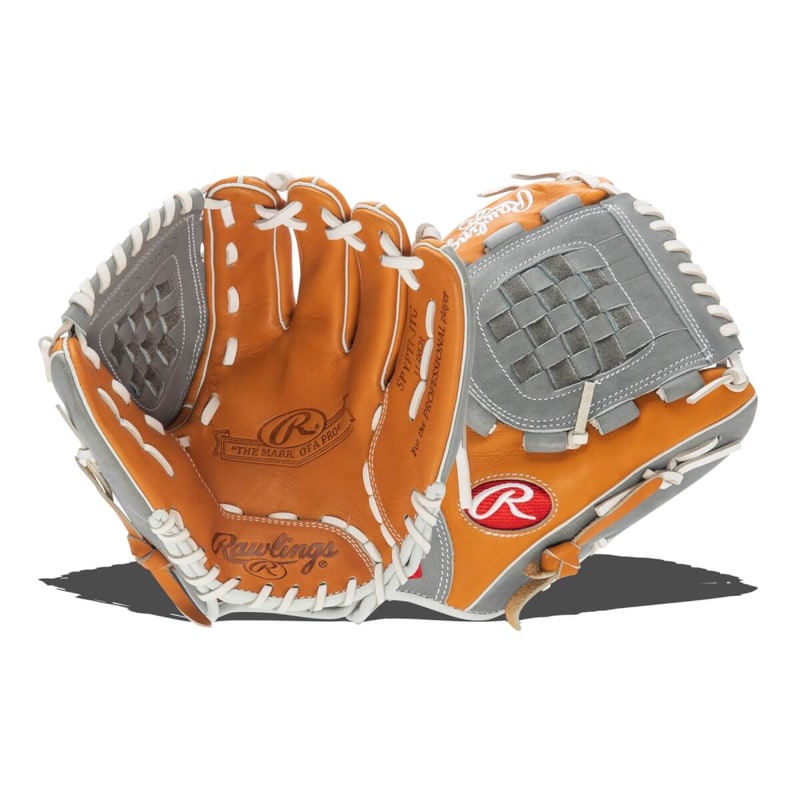
A favorite amongst pitchers, the basket glove web type is completely closed off, which helps conceal the ball and the type of pitch grip from the batter. This baseball glove web type is popular with catchers, pitchers, and some middle infielders. It features small, intertwining straps of leather woven together to form a basket pattern, which is where this glove web type gets its name.
This basket weave pattern also provides flexibility, making the glove easier to close and break in. Because this glove web type completely closes the glove off, it is popular among pitchers who need to keep the type of pitch hidden from the batter.
2. I-Web
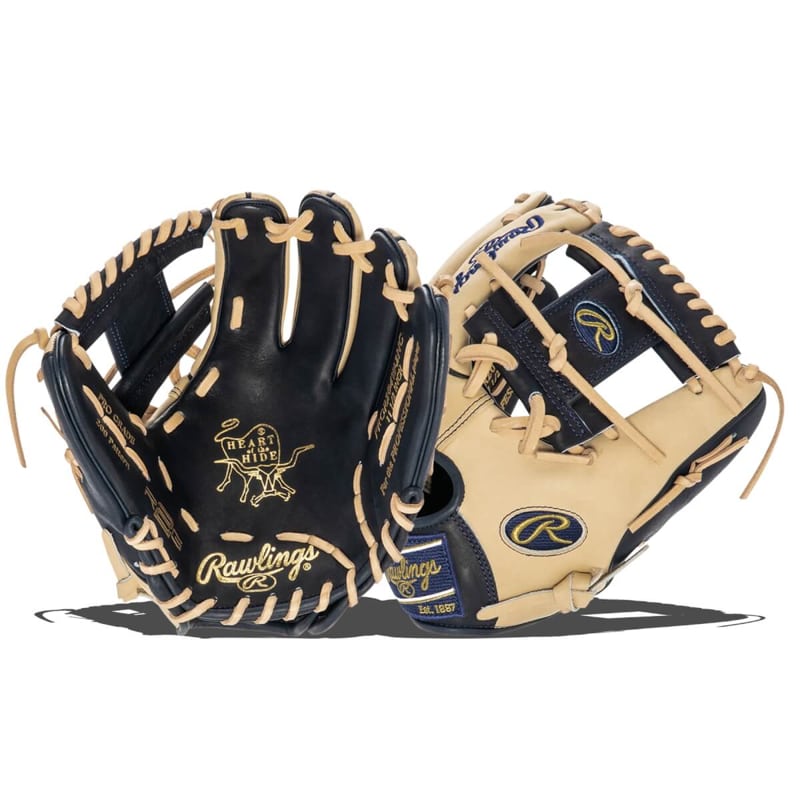
The I-Web is popular with both professional and amateur infielders. It features leather fashioned to form a capital “I,” a design popular amongst middle infielders. This glove web type has two horizontal leather strips at the top and bottom of the web and one centered strip to form what looks like a capital I.
The I-web helps create a shallow pocket that allows for faster ball transfers and allows the ball to consistently fall in the same spot for quick turns at second and relay throws quickly from the outfield. The gap in its design lets players see high flyballs and track them to the glove.
This glove web type is common in the infield since its open-webbing design lets dirt and debris fall through for quick transfers and exchanges.
3. H-Web / Modified H-Web
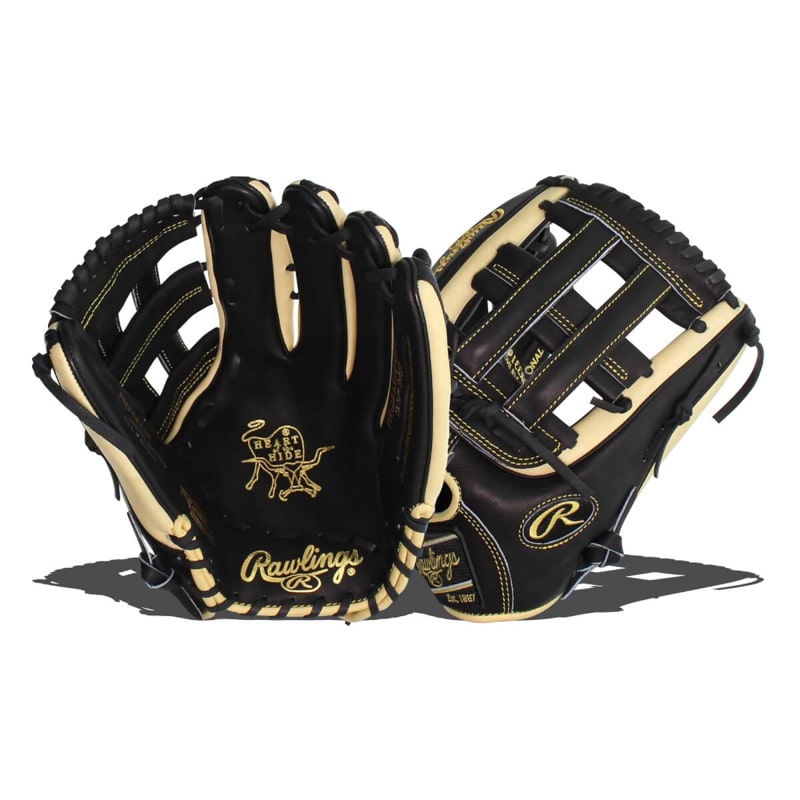
Like the I-Web, the H-Web gets its name from the letter “H” formed when the two leather strips (two vertical and one center-horizontal) are sewn. Unlike the I-Web, H-Web gloves are great for both infielders and outfielders. However, the H-Web is most popular amongst infielders owing to its sturdy but flexible design.
This open web type allows dirt to fall right through it while giving players a sturdier construction to field hard-hit balls and enable players to see through to catch pop-ups and fly balls.
Another version of the H-Web is the Modified H-Web, a design that upgrades the classic H-Web pattern by adding a leather strip to the top of the glove to help strengthen the glove and also to expand the first baseman’s catch radius for that extra lil bit for those flavorful snow cone grabs where the ball is caught at the very tip of the glove.
4. Trapeze Glove Web Type
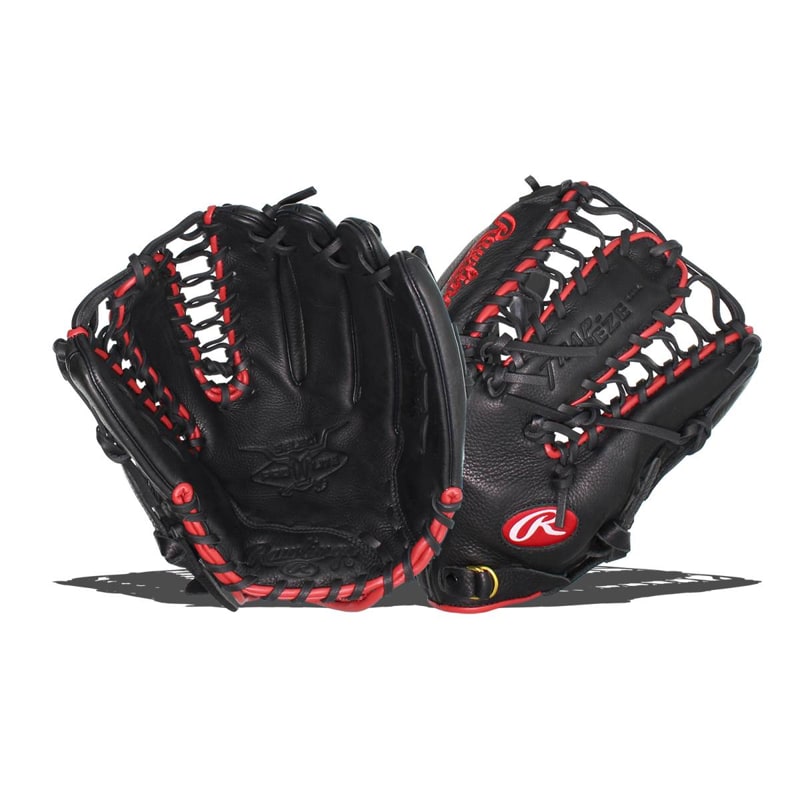
Trapeze web gloves are used almost exclusively by outfielders. These gloves feature a thin leather strap with interwoven lacing on either side, which creates a deeper pocket for catching fly balls.
The design has a deep pocket to easily and quickly secure the ball, and the glove webbing shades their eyes from the sun when tracking fly balls but still allows the player good visibility to track balls into the glove.
5. Modified Trap Baseball Glove
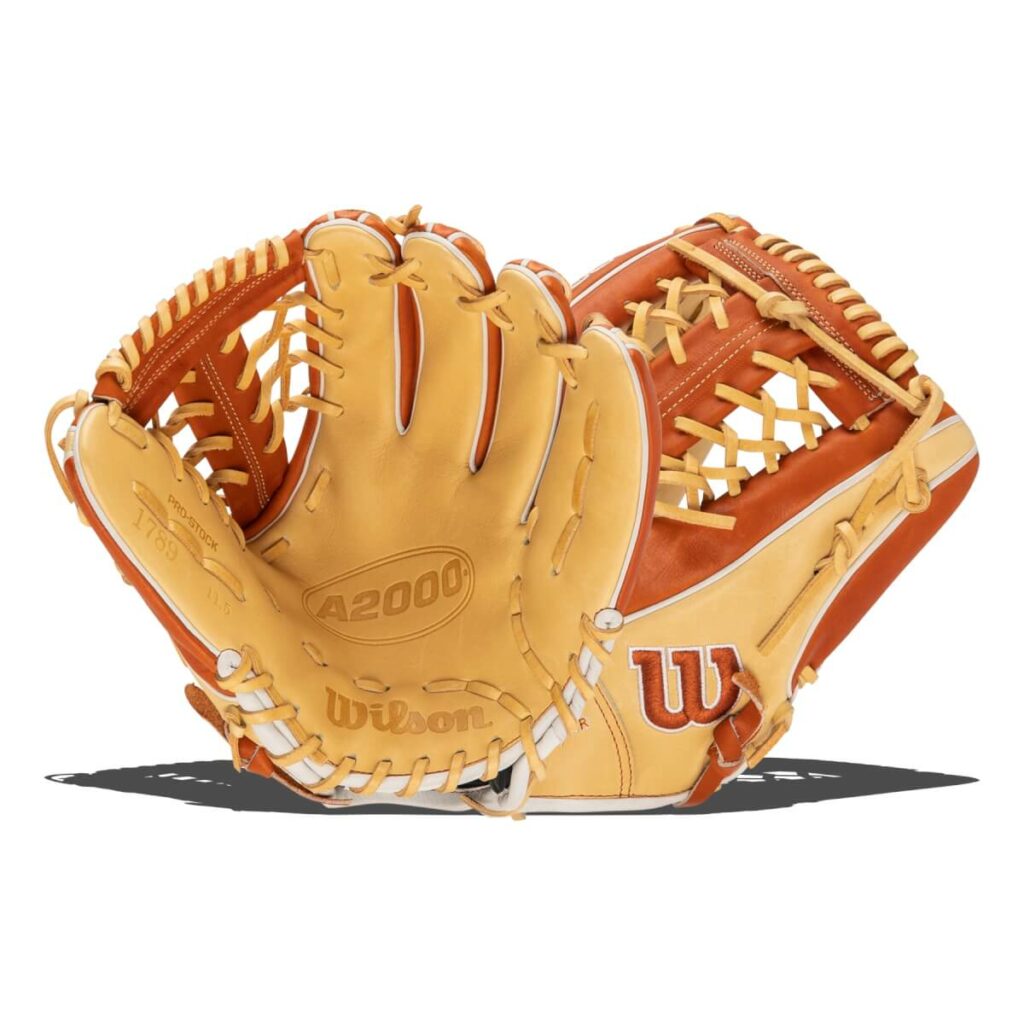
The Modified Trapeze web features a design similar to the traditional trapeze web. The only difference is a leather strap added to the top of the web along the top for added stability. This addition makes it a universal glove web that players in all defensive positions can wear.
6. Single Post Web or Cross Web
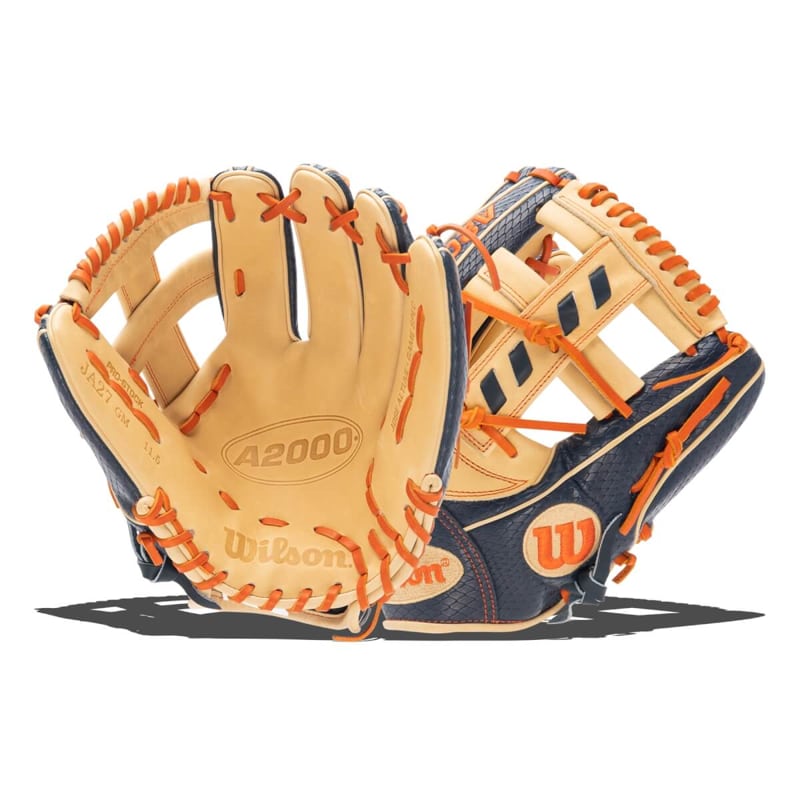
This glove webbing type features one solitary vertical leather strip (the post) and two middle-horizontal leather strips.
The Single Post Web (aka Cross Web) gives fielders consistency, flexibility, and visibility needed to receive the ball. Single Post Web gloves have a deep pocket, which makes securing the ball easy.
The drawback, however, is that while the deep pocket makes it easier to secure the ball, transfers can be difficult. This difficulty explains why Single Post Web types are primarily used by first basemen who don’t often require quick transfers.
7. Double Post Web
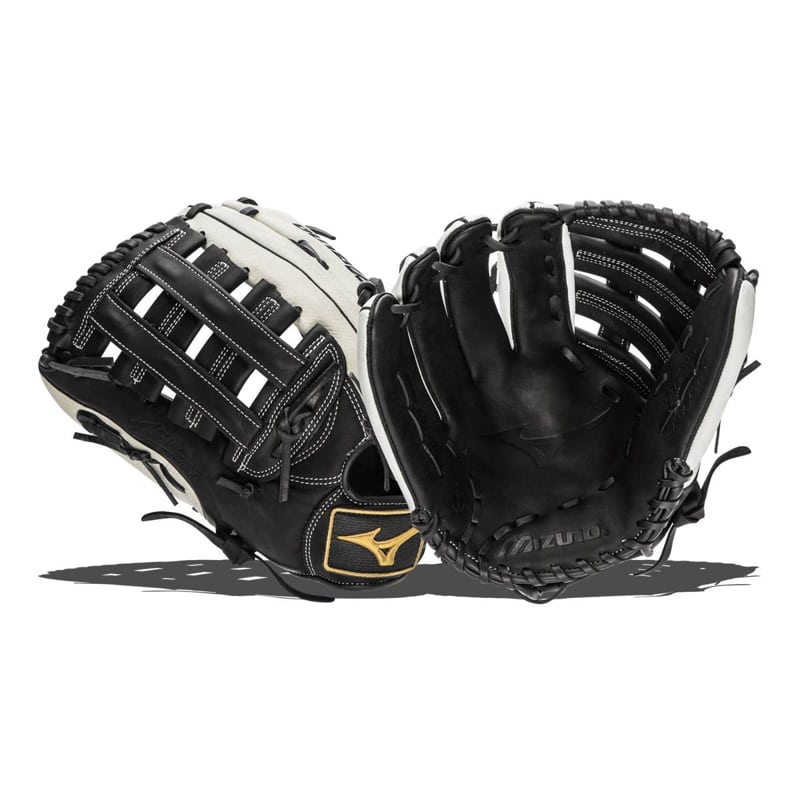
This glove web type shares the same design as a single post web. However, instead of one post (the vertical leather strip on the glove’s web), there are two. This design is identical to that of the H-web, but the strips of leather used on the double post web are much thicker, making them the ideal choice for pitchers as they help conceal the baseball from the batter’s view. However, it’s common to see this glove web type in the infield since it provides flexibility and visibility.
For infielders, the choice between the single post and double post web type often boils down to personal preference.
8. Two-Piece Closed Web
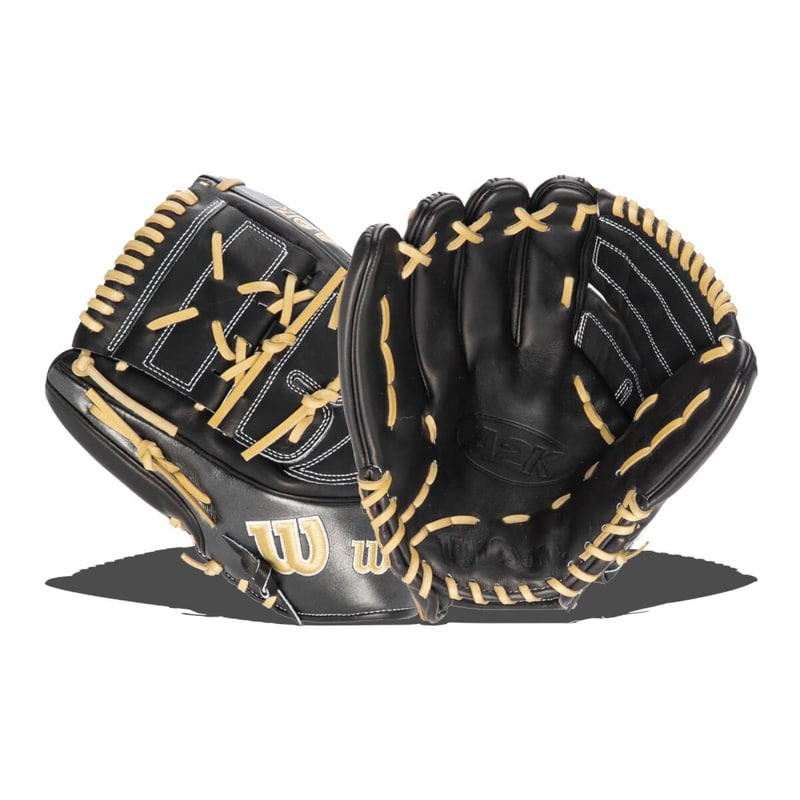
Often used by pitchers, the two-piece glove web type closes off the glove, allowing the pitcher to conceal the ball from hitters, much like the closed web/basket web.
The design of the two-piece closed web requires additional material to form the web. For this reason, Two-Piece Closed webs make for a heavier glove.
9. Half Moon and One-Piece Webs
Another similar glove is the Half Moon web, identical to the Two-Piece web. The half-moon web also has two leather pieces stitched together to create a tighter, more secure pocket for secure catches.
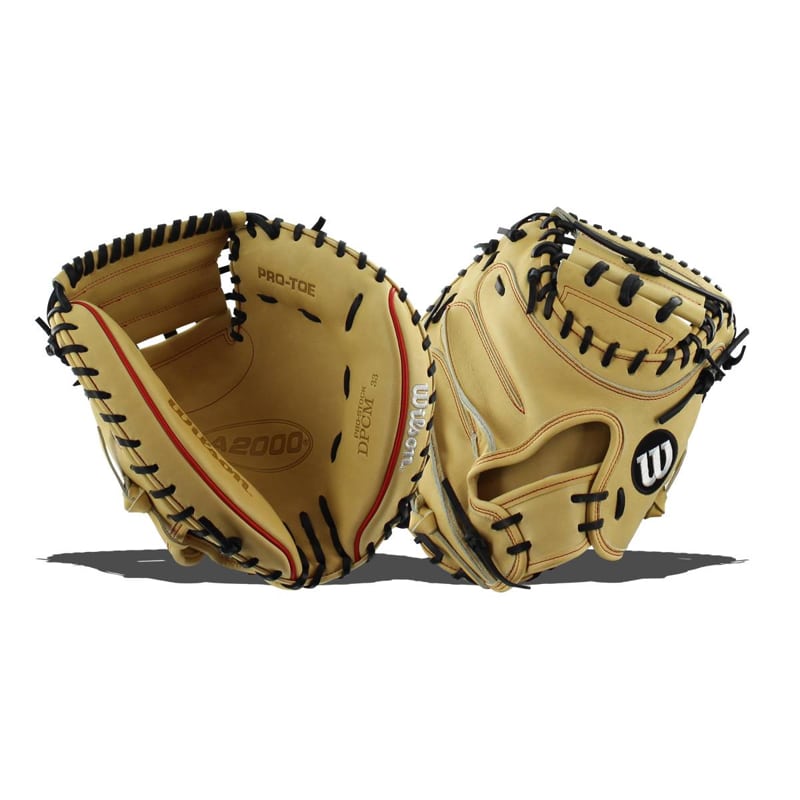
One-piece webs are popular amongst catchers. They feature one large piece of leather, with lacing around the outer edge of the mitt that helps form a secure, shallow pocket.
Half-moon gloves and one-piece webs are often fingerless and heavily padded to reduce the sting from hard-thrown balls and have a tight, shallow pocket thanks to the web. This pattern creates a tight pocket and can offer more flexibility than other one-piece styles.
The main difference between the closed web/basket web and this Two-Piece Closed web is the weight. Two-Piece Closed webs will often be heavier, and as a result, more preferred by older, more experienced players looking for a heavier glove.
Web Glove Type by Position
Pitchers
Web Design: Basket, Two-piece Closed, Closed, Modified Trapeze
Pitchers need a glove web type that completely closes the glove off to conceal the ball and keep the type of pitch grip hidden from the batter. The best webs for pitcher gloves often feature closed webbing.
Catchers
Web Design: Half Moon and One-Piece Webs
A catcher’s mitt comes with heavy padding that can withstand constant abuse over 9 innings to protect the catcher’s hand. The glove web type in catcher’s gloves needs to help conceal signs. These gloves also come with stronger, deeper pockets to make secure throws.
First Basemen
Web Design: Single Post Web, Modified H-Web, Dual Post web
The first baseman needs a glove web type that deals with the rigors presented to them. By design, this glove should provide a wide, long mitt design ideal for scooping up grounders and extra padding to catch hard throws from teammates in the infield. The best glove web for a first baseman is the Single Post Web, the Modified H-Web, and the Dual Post web. These webs provide stronger, deeper pockets to help first basemen catch and secure those balls.
Middle Infielders (SS/2B)
Web Design: I-web, H-web, Modified H-web, Single post
Shortstops and second basemen require a glove that helps them catch grounders and quickly perform the glove-to-hand transfer. Open webs and shorter, shallower pockets help aid the glove-to-hand transition giving them time to catch the lead runner or turn two. The best webs for middle infield gloves are H-webs, I-webs, and single post webs. Double Post Web gloves feature on occasion. These glove web types feature loosely stitched pieces of leather and larger holes which let players catch the ball without scooping up dirt in the process. The lighter gloves also mean faster maneuvering.
3rd Basemen
Web Design: H-web, Modified Trapeze, Closed
Third basemen often have to deal with hard-hit grounders and line drives. While a glove with a deep pocket makes sense, third basemen are infielders and must make fast plays. With this in mind, Third Basemen need to strike a balance between a heavier, closed web with a lighter, speedier open web.
Outfielders
Web Design: H-web, Single post, Trapeze, Modified Trapeze
Outfielders need a deeper, tightly stitched pocket for better support than infield gloves used by infielders. The best web for outfield gloves would be trapeze webs, H-webs, and single-post webs. However, H-webs and single-post webs are lighter and have larger holes in the pocket for better visibility.
I have always preferred Trap Eze webs to all others. The pocket is deep and can be given additional depth by tightening the laces at the top of the web, then pushing on the pocket. You can’t do that with a modified trap. It does put more strain on the laces for line drives and hard throws, but makes the glove far better for fly balls. If you tighten the laces at the top of the web, you will still be able to snow cone fly balls with ease. It makes for the best possible outfield glove, especially when it’s used in a larger glove.
Trap Eze webs can also be effective for infielders if used in a smaller glove pattern. Ozzie Smith, one of the best fielders in the history of the sport, used a 12 inch glove with a Trapeze web for years. I’ve watched shortstops avoid 12 inch gloves like the plague, but one of the best defensive shortstops that ever lived used a 12 inch Trap Eze glove for a majority of his career. Ozzie was renowned for being a ground ball vacuum. The laces should not be tightened at the top of the glove like it should be for an outfielder’s glove. You want tightness on the deeper web laces if you play infield positions. It’s hard to find an 11 1/4 inch glove with this design, but if you can get one made, I imagine it would be very effective.
Baseball players are a superstitious lot. Getting a player to convert to a different glove design or size can be difficult. I have never seen a player that switched to a Trap Eze web see anything but better defensive play. The size and weight can scare a middle infielder; Trap Eze gloves are heavier. Unless you have baby fingers, your fingers are not going to get caught in the lacing. In fact, I’ve seen laces fail and fingers getting hung up on I webs more frequently than any other type of glove.
You’ve got to take care of the lacing on a Trap Eze glove. You need to treat the laces just like the rest of the leather on the glove. I would also recommend having the glove relaced at least once every other year. Sure, there are upkeep issues, adjustment issues, and weight issues, but regardless of position, you should try one out at least once. Once you get one on your catching hand, you’ll fall in love and swear by them as I do.
I’m wondering what all that lacing is about. For instance, my glove and many others have laces routed through several holes punched in a line in the middle of the little finger and similarly through the middle of the thumb. Those laces are tied in a square knot on the outside of the glove. The free ends of the lacing can provide a tasty snack for some, but I doubt that was the design intent. I surmise that those laces stiffen the finger and thumb, and they provide a raised edge to help keep the ball from exiting the pocket. But, I have yet to find an article discussing these or the incredibly complex other laces on a ball glove. Exception – this article’s discussion of the trapeze web.